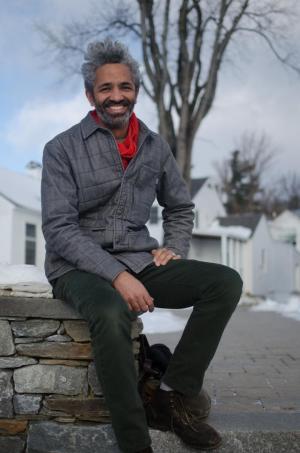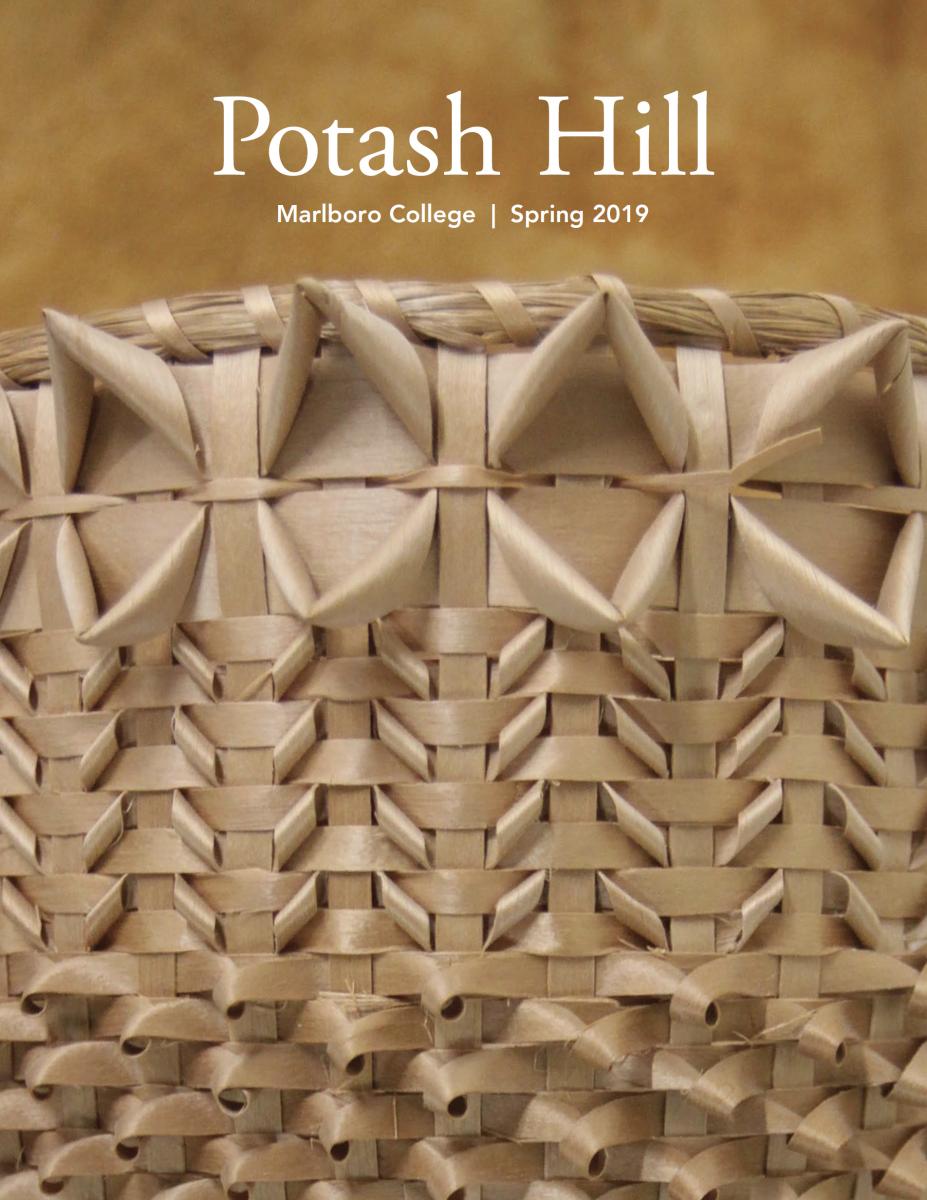 “Sculpture is often used as an umbrella term encompassing everything from carving stone or modeling clay to performance and video work—all of those things that exist beyond two-dimensional art,” says William Ransom, who joined Marlboro to teach sculpture and visual arts in the fall. “For myself, I have taught things that reach across that spectrum, all the way from direct material engagement to more installation-based stuff.”
“Sculpture is often used as an umbrella term encompassing everything from carving stone or modeling clay to performance and video work—all of those things that exist beyond two-dimensional art,” says William Ransom, who joined Marlboro to teach sculpture and visual arts in the fall. “For myself, I have taught things that reach across that spectrum, all the way from direct material engagement to more installation-based stuff.”
William was already familiar with Marlboro from years ago, when he was a Bennington College student and came to campus to play their perennial soccer rival. He also grew up in Strafford, Vermont, so after ten years on the West Coast, getting his MFA from Claremont Graduate University and teaching at Pomona College, Cal State San Bernardino, and California Institute of the Arts, he was eager to return to the Green Mountain State. A yearlong visiting professorship at Middlebury College only whet his appetite.
“Having grown up in Vermont, and now having kids, I started kind of stalking Marlboro College—in the best way—looking for job postings,” says William. “And when I saw the posting and dug a little bit deeper into the program, I was really smitten with the idea. The small size appeals to me because I like having a developed relationship with my students surrounding their work. That’s really valuable, and at bigger schools it’s hard to come by.”
William also likes the ability to plan his own curriculum and the potential for cross-pollination with other faculty members with overlapping interests. “One of the benefits about being in a small place is that nimbleness.”
When introducing students to sculpture, William starts from an embodied experience of material, asserting that there is a lot of useful information to be gleaned from paying attention to materials and direct material engagement with one’s hands and body. He often likes to start with clay because it is so receptive to manipulation in a way that wood or stone is not.
“Clay is immediately reflective of your engagement with it, and that immediacy gives feedback in the form of knowledge built into your body, if you are paying attention. I feel like students respond very well to the directness of that, as a point of entry. As you get further up on the ladder of learning about sculpture, the direct engagement leads to conceptual engagement, and materials run the spectrum from stone carving to installation, social sculpture, and performance-based work. I feel like material engagement is the way to open the door to those other more conceptually driven works and interacting with the audience—the caliber of student work is improved greatly by a broader material understanding.”
William’s own work often concerns issues of race and social justice, as well as sustainability, interaction with the natural world, and agricultural experience. He works with wood a lot, often testing its material potential in ephemeral installations that evoke dynamic tension between elements and invite audience participation.
“I really like the potential of the visceral encounter for the viewer,” says William, who has exhibited his work in galleries across the country, from New York, Detroit, and Chicago to California. Most recently, he was included in group exhibitions in Los Angeles and Santa Monica, California, and a solo exhibition titled Hem n’ Haw, in Hudson, New York. William was awarded a Windgate Fellowship at Vermont Studio Center in 2015, in addition to several other fellowships over the years.
William is excited about a class he’s teaching this spring close to his own interests, called Art’s Ghost: The Ephemeral and Letting Go. In addition to exploring the rise of ephemerality in contemporary art history, students will be exploring materials that, by design, don’t last— from snow and ice to installation and performance art.
“We’ll be thinking pretty broadly about what it means to make something that has a brief window of time in which it can be experienced or enjoyed, and questioning the preciousness of objects,” says William.
A self-described biracial farm-boy, William recognizes that there are some drawbacks to relocating from southern California to Vermont, notably the relative scarcity of cultural institutions and opportunities and the lack of racial diversity. But he is certain that Marlboro’s geographic location should not hinder students’ access to culture. “I have been pleasantly surprised, actually, at how much more diverse Vermont has become since I was a kid here.”

